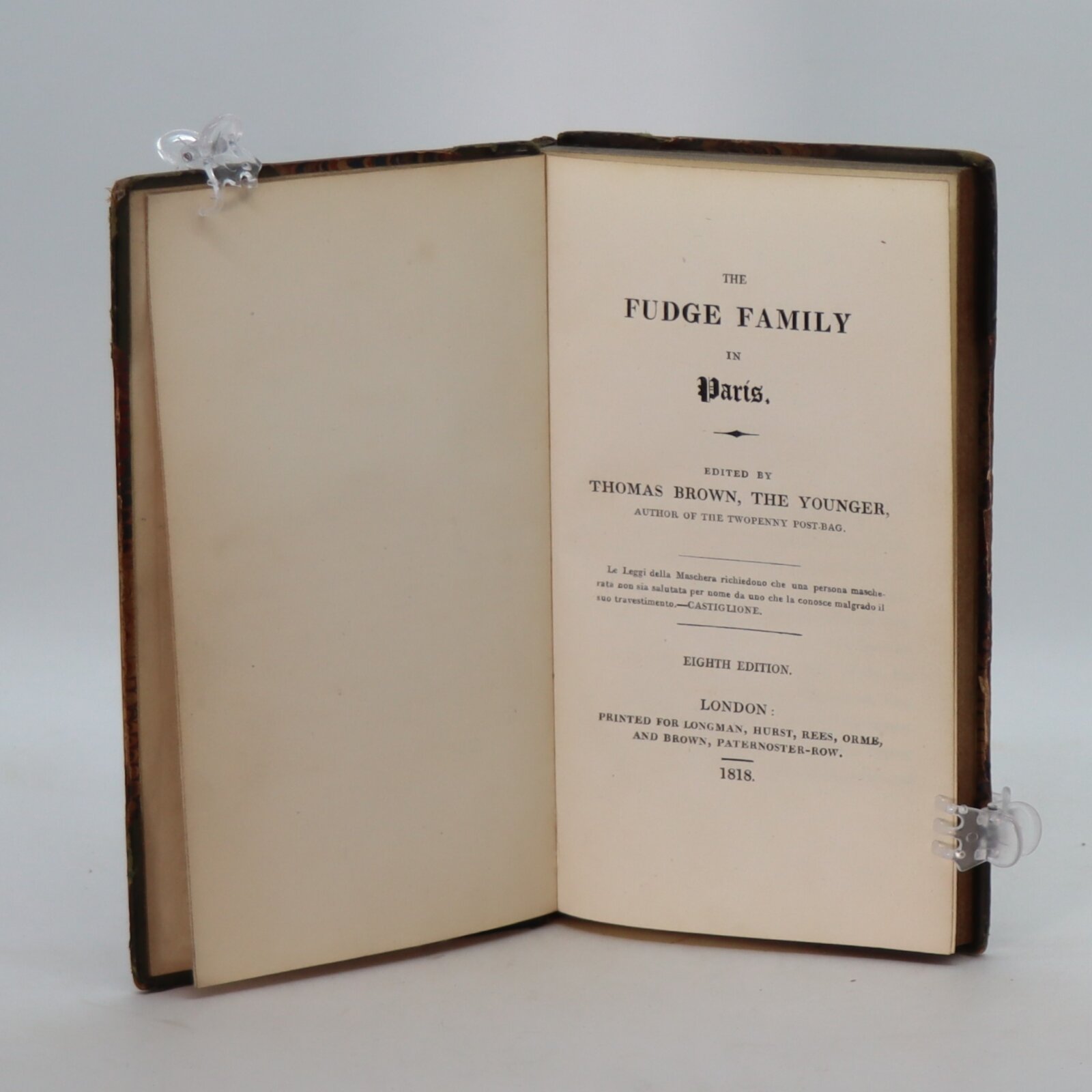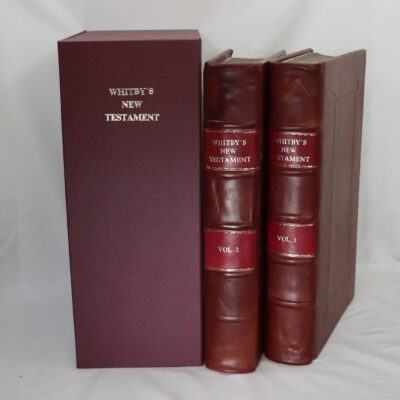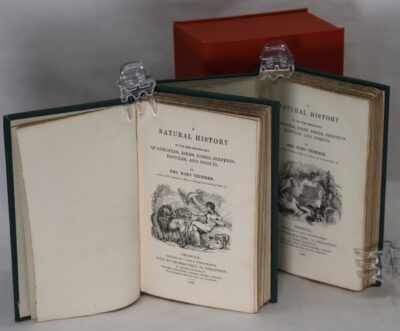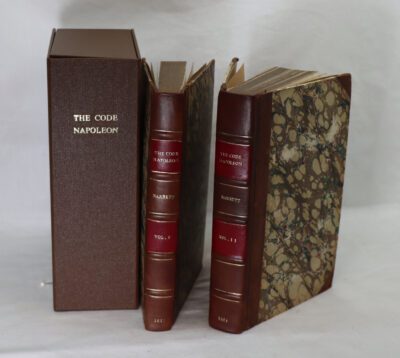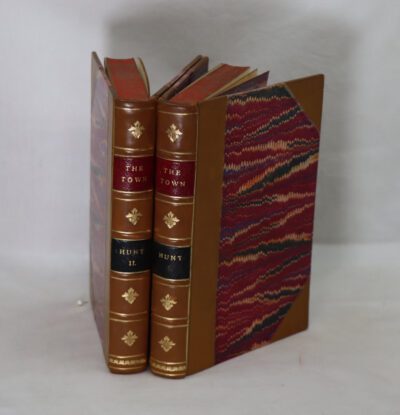The Fudge Family in Paris.
Printed: 1818
Publisher: Longman Hurst Rees. London
| Dimensions | 11 × 18 × 2 cm |
|---|---|
| Language |
Language: English
Size (cminches): 11 x 18 x 2
Condition: Fine (See explanation of ratings)
Your items
Item information
Description
Green spine with raised and gilt banding, maroon title plate and gilt lettering.
F.B.A. provides an in-depth photographic presentation of this item to stimulate your feel and touch. More traditional book descriptions are immediately available.
First Edition
The Fudge Family in Paris is an 1818 verse satire by Thomas Moore. It was intended to be a comedic critique of the post-war settlement of Europe following the Congress of Vienna and of the large number of British and Irish families who flocked to France for tourism. Written after a brief trip to Paris, its popular success inspired several more parodies and replies.
The Fudge Family in Paris was written following Thomas Moore’s visit to Paris in company with Samuel Rogers in 1817. Such was its popularity after its appearance on 10 April 1818 from the Longman partnership that five editions were published in its first fortnight, with a further four editions that year as well as American editions from New York and Philadelphia. On its title page the work’s editorship was attributed to Thomas Brown the Younger (alluding to the satirist of a century before), under which name Moore had published earlier epistolary political satires under the title of Intercepted Letters (1813). However, the true authorship of the Fudge correspondence was soon identified.
Ostensibly the work is a collection of letters that depict the visit to Paris of the Fudge family in the wake of the Bourbon Restoration. The party is made up of four characters who record their very different impressions. The father, Phil Fudge, is researching a book which he intends to be propaganda on behalf of his patron, Lord Castlereagh, whose parliamentary speeches he parrots. His son Bob is a dandy and glutton, while his daughter Biddy is in search of romance and falls in love with a commoner whom she believes to be royalty in disguise. Their tutor, Phelim Connor, on the other hand, is an Irish revolutionary and Bonapartist opposed to everything that his employer (and distant relative) stands for.] Each character is further differentiated by the poetic form of their letters: Phelim declaims in decasyllables, Phil trips in lighter octosyllables, while Bob and Biddy chatter colloquially in anapaestic measure.
As well as a comic social satire, the poem is also an attack on the tyrannical politics of the Holy Alliance and English policy in Ireland, identified with the British Tory party and particularly the foreign secretary, Lord Castlereagh. It was the political themes that William Hazlitt preferred in his contemporary review of The Fudge Family in Paris, soon collected in his Political Essays (1819), making of it an opportunity to bludgeon such Lake Poet turncoats as Southey, Wordsworth and Coleridge. Another critic allowed that the work was for its time “a happy blending of the political squib and the social burlesque”, yet over the decades “it is the natural fate of ephemeral satire to perish with the events which gave rise to it”.
Literary historians in the following century saw in Moore’s poem a successful and influential imitation of Christopher Anstey’s The New Bath Guide and in the line of the “anapaestic travel narratives” that Anstey had inspired. There has, however, been uncertainty over defining its literary genre. The work has been described as a “satirical travelogue”, a “verse satire in epistolary form”,and even as a precursor of the Victorian “verse novel”.
Thomas Moore (28 May 1779 – 25 February 1852) was an Irish writer, poet, and lyricist celebrated for his Irish Melodies. Their setting of English-language verse to old Irish tunes marked the transition in popular Irish culture from Irish to English. Politically, Moore was recognised in England as a press, or “squib”, writer for the aristocratic Whigs; in Ireland he was accounted a Catholic patriot. Married to a Protestant actress and hailed as “Anacreon Moore” after the classical Greek composer of drinking songs and erotic verse, Moore did not profess religious piety. Yet in the controversies that surrounded Catholic Emancipation Moore was seen to defend the tradition of the Church in Ireland against both evangelising Protestants and uncompromising lay Catholics. Longer prose works reveal more radical sympathies. The Life and Death of Lord Edward Fitzgerald depicts the United Irish leader as a martyr in the cause of democratic reform. Complementing Maria Edgeworth’s Castle Rackrent, Memoirs of Captain Rock is a saga, not of Anglo-Irish landowners, but of their exhausted tenants driven to the semi-insurrection of “Whiteboyism”. Today, however, Moore is remembered almost alone either for his Irish Melodies (typically “The Minstrel Boy” and “The Last Rose of Summer”) or, less generously, for the role he is thought to have played in the loss of the memoirs of his friend Lord Byron.
Condition notes
Want to know more about this item?

Related products
Share this Page with a friend


